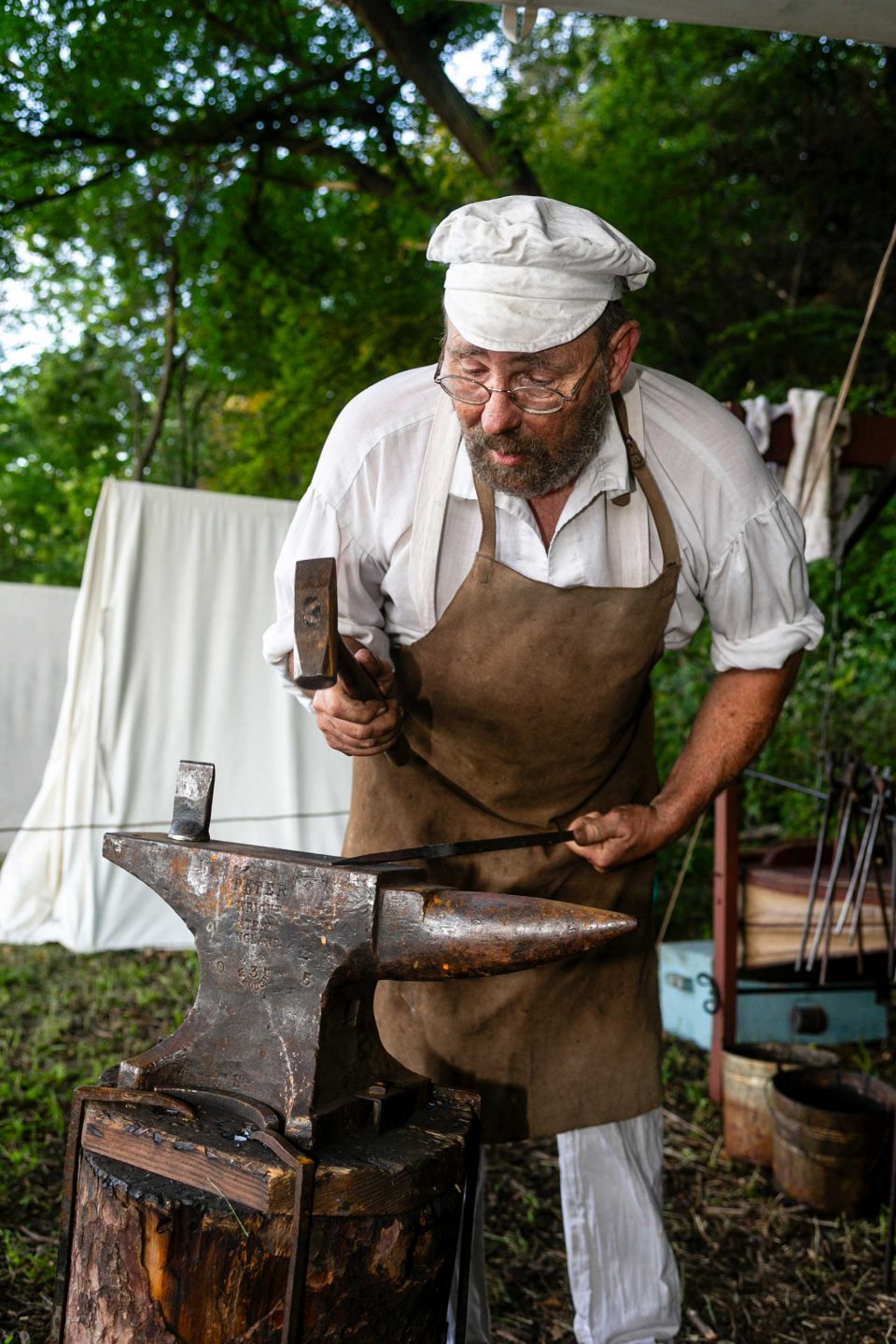
Story and photos by Jenny Nguyen-Wheatley
Dean Slader has tried retiring his hammer and anvil several times. The 82-year-old blacksmith’s relationship with Fort Atkinson State Historical Park “goes back.” While a student at Fort Calhoun High School, the archaeological dig down the road made a lasting impression on the teenage Slader.
Abandoned by the U.S. Army in 1827, the site of Fort Atkinson was converted to farmland, and in 1961, concerned Washington County locals rallied for the restoration of the site, thus creating the Fort Atkinson Foundation that same year. Slader’s mother, Genevieve Dorsey Slader, was a founding member. Her son took such a strong interest in the area’s history that he went on to teach high school social studies for 35 years, retiring in 2001 in Valley.
In the 1960s, Slader threw himself into buckskinning, a subset of historical reenactment concentrating on the fur trade. He also became involved with the Fort Atkinson Muzzleloaders group. As a competitive shooter, Slader started building his own guns, including the ironwork of fashioning trigger guards and butt plates, which led him down the path of blacksmithing.
“I got ahold of an anvil and a forge and some basic small tools sometime in the mid-to late-’70s and started down that direction and never built another gun,” Slader said. It became what he calls an avocation, a self-sustaining hobby. His passion for blacksmithing has everything to do with his interest in the past.
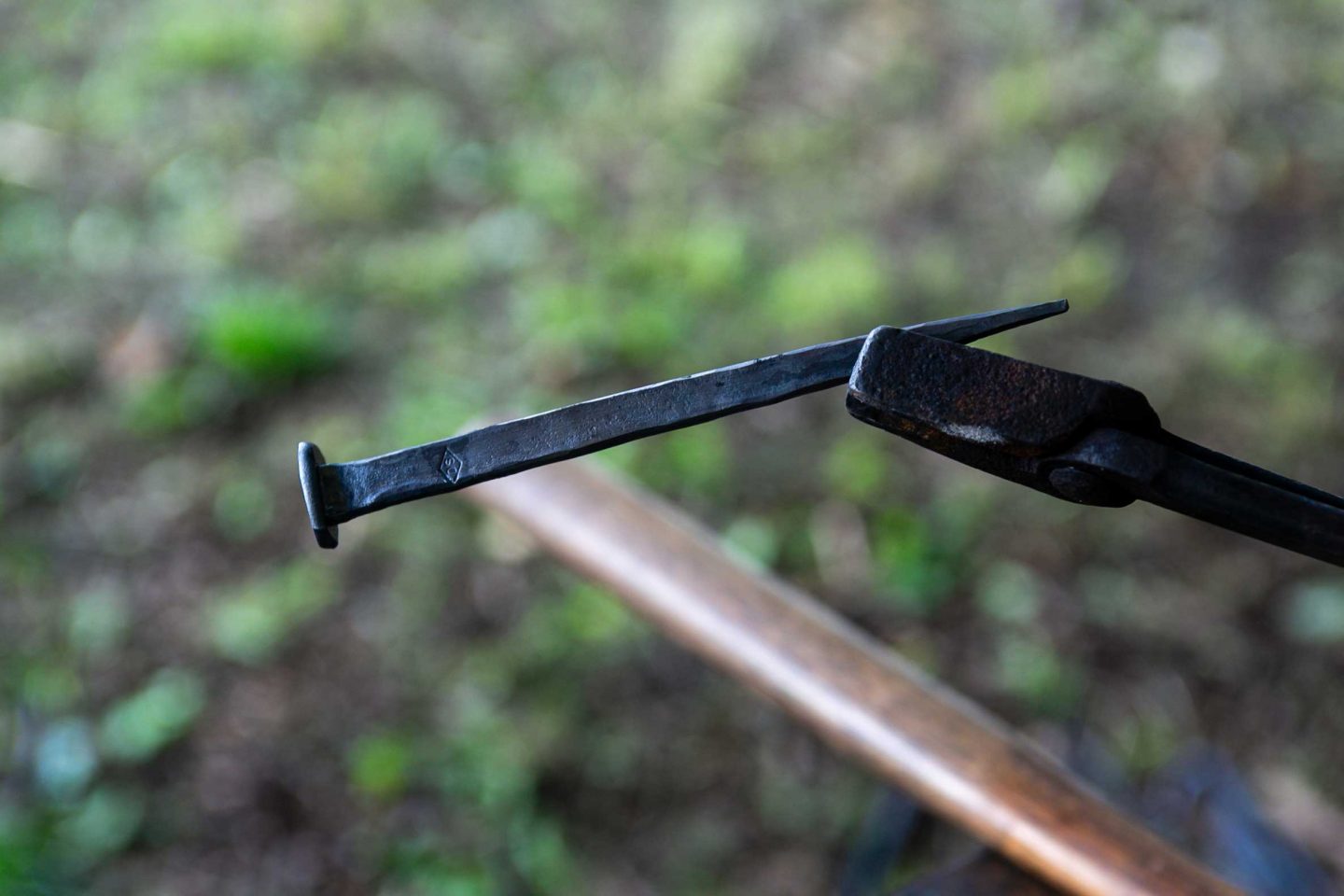
“My craft is a 3,000-year-old craft,” he said. “Historically, a hammer is a hammer. A pair of tongs for handling iron is a pair of tongs. A chisel is — that hasn’t changed. A punch hasn’t changed. It’s because the form follows function.”
To be a part of living history is to be a part of ongoing research, Slader explained. It’s the same for the tinsmith, the weavers and spinners. In many ways, Slader’s story follows the dawn of the state historical park, its renowned living history program and dedicated volunteers.
Friends of Fort Atkinson
The early days of living history at Fort Atkinson were informal. The earliest volunteers came from the Fort Atkinson Muzzleloaders group, which amounted to three or four people, Slader said, including himself. Then the Bicentennial Wagon Train Pilgrimage came through Nebraska in 1976 to commemorate the westward movement of white American settlers in the 19th century. Fort Atkinson SHP was one of the stops, an event that Slader attributes to the genesis of the fort’s living history program.
“And then it just grew from there, from maybe half a dozen of us, and then into the teens, and then 20s, and so on and so forth, as far as numbers,” Slader said. The volunteer program grew so large in the 1980s and ’90s that it finally had to be formally organized, hence the creation of the Friends of Fort Atkinson group.
By the time the Bicentennial Wagon Train came through, Slader had made his transition from mountain man to blacksmith permanent — a position he still holds today, some 50 years later. It’s a unique occupation in the military, Slader said. Not only can a blacksmith make his own tools, he’s also responsible for making and repairing tools for everyone else, from shovels, to axes, to hoes and rigs, hinges, latches and clasps.
“Like most things in the army, you needed it yesterday,” he said. “To run a post of this size, we know from the enlistment records, they had 24 blacksmiths.”
Naturally, the Friends of Fort Atkinson experiences frequent turnover with its volunteers. People’s life circumstances change — they get busy, move away or have children. Some, like Slader, have stuck around. Fort Calhoun local Doug Appel, who worked alongside Slader in the blacksmith shop for nearly 15 years, volunteered until he was no longer able before his death in 2020. Despite attempts to retire and the loss of a dear friend, the fort keeps calling Slader back.

“There’s a passion, and it’s a part of home. It becomes a part of what you do. It becomes part of a thought process that you have. You can’t stay away,” Slader said. “Some of those volunteers, within their family, they’re on second or third generation. And I’ve always said, people who do live in history — they’re a different breed of cat.
“We’re always looking for new volunteers,” he added.
Over the decades, Slader, Appel and others have striven to provide visitors an insightful view of the day-to-day operations of blacksmithing at Fort Atkinson. Not only is the accuracy of their research and performance of living history important, volunteers also are conscientious of their role in representing the Nebraska Game and Parks. They are essentially on stage.
“Nothing will take place at Fort Atkinson that will jeopardize the experience for the visitor. It’s not written anywhere, but if there’s a guiding rule, I guess that’s one of them,” he said. “It can become a heavy weight to bear sometimes.”
This unwritten mission statement, Slader has passed down to his latest apprentices, Thomas Bansen of Blair and Kody Keefer of South Sioux City — both in their early 30s. Their timely arrival has brought both elation and relief to the veteran blacksmith.
“They’re godsends,” Slader said with no attempts of hiding his excitement. “I now feel much more comfortable about what we do at the blacksmith shop, and so on, continuing. Because they exhibit the same passion and attitude.”
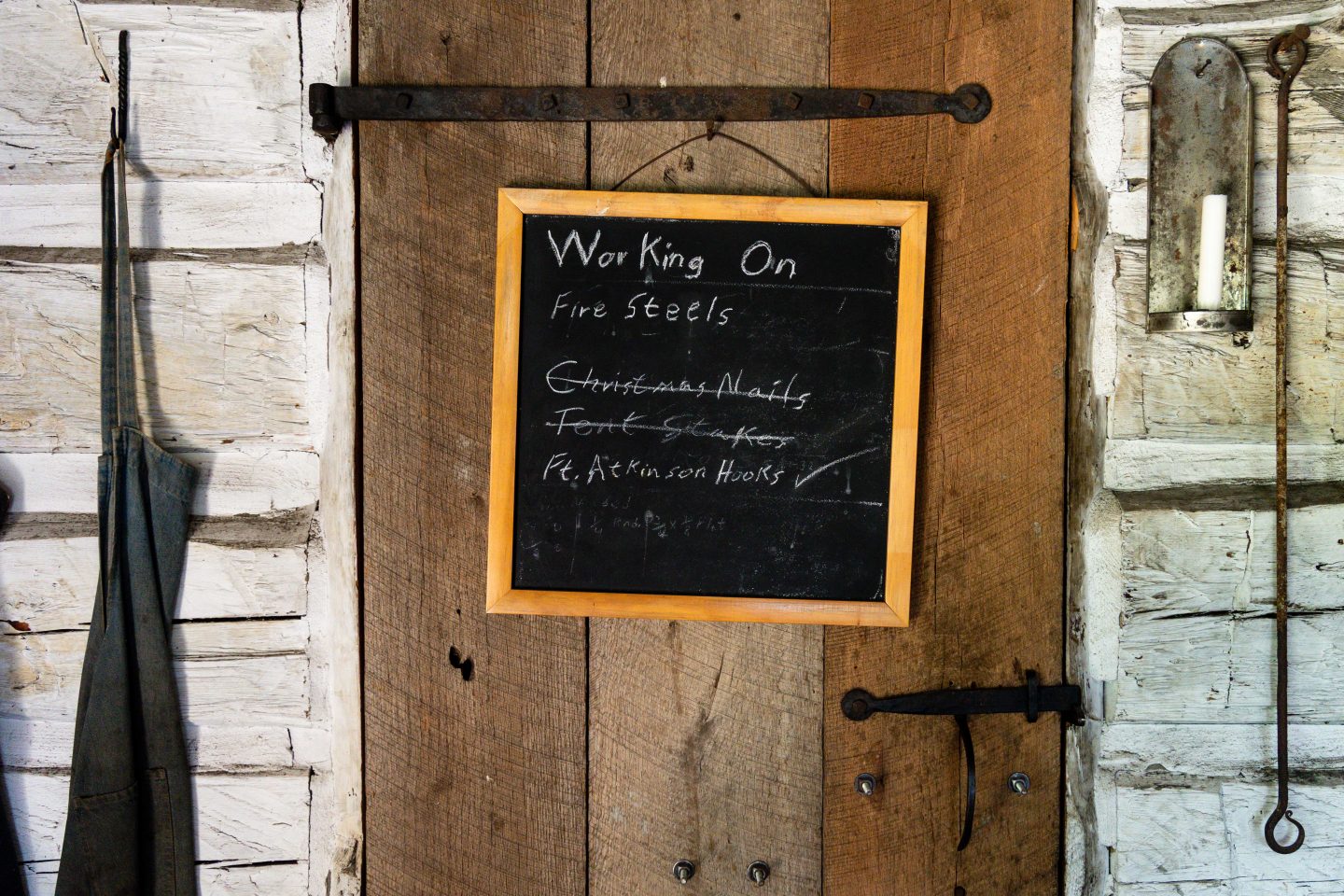
New Blood
As a child, Bansen frequently visited Fort Atkinson with family. He became drawn to the blacksmith shop more than anywhere else on the fort, and years later, a college professor noted Bansen’s interest in historical weapons and armory and connected his student with a blacksmithing instructor in 2012. Bansen started taking lessons once a week and, in 2015, struck out on his own.
In addition to general ironwork, Bansen’s interest lies in making knives, swords and axes; one of his favorite creations is a 13th century knight’s arming sword. Bansen finds fascination in the enduring history of ironwork, its role in the progression of technology, and the creative outlet the craft provides. After several years of encouragement, Bansen finally made the leap to join Slader’s fort shop in 2022, following a career change that freed up more time.
Keefer showed up at Slader’s door with no experience in blacksmithing. His path to Fort Atkinson came by way of the Missouri River Outdoor Expo at Ponca State Park, where he volunteered at the muzzleloading station annually with his father and uncle. During breaks, Keefer would wander down to the heritage encampment by the riverfront, where he befriended several Fort Atkinson volunteers, including Slader, who invited him to events at the fort.
In early 2022, Keefer’s father and uncle unexpectedly passed away within three weeks of each other. Despite his grief, their deaths spurred Keefer to join the Friends of Fort Atkinson in 2023. He realized that life was too short.
“If it wasn’t for the unfortunate, untimely passing of my dad and my uncle, I never would have had the gumption to pick up blacksmithing,” Keefer said. “Dean, with his wisdom and his years of knowledge and experience … I figured if I was going to learn something from somebody, it had to be him.”
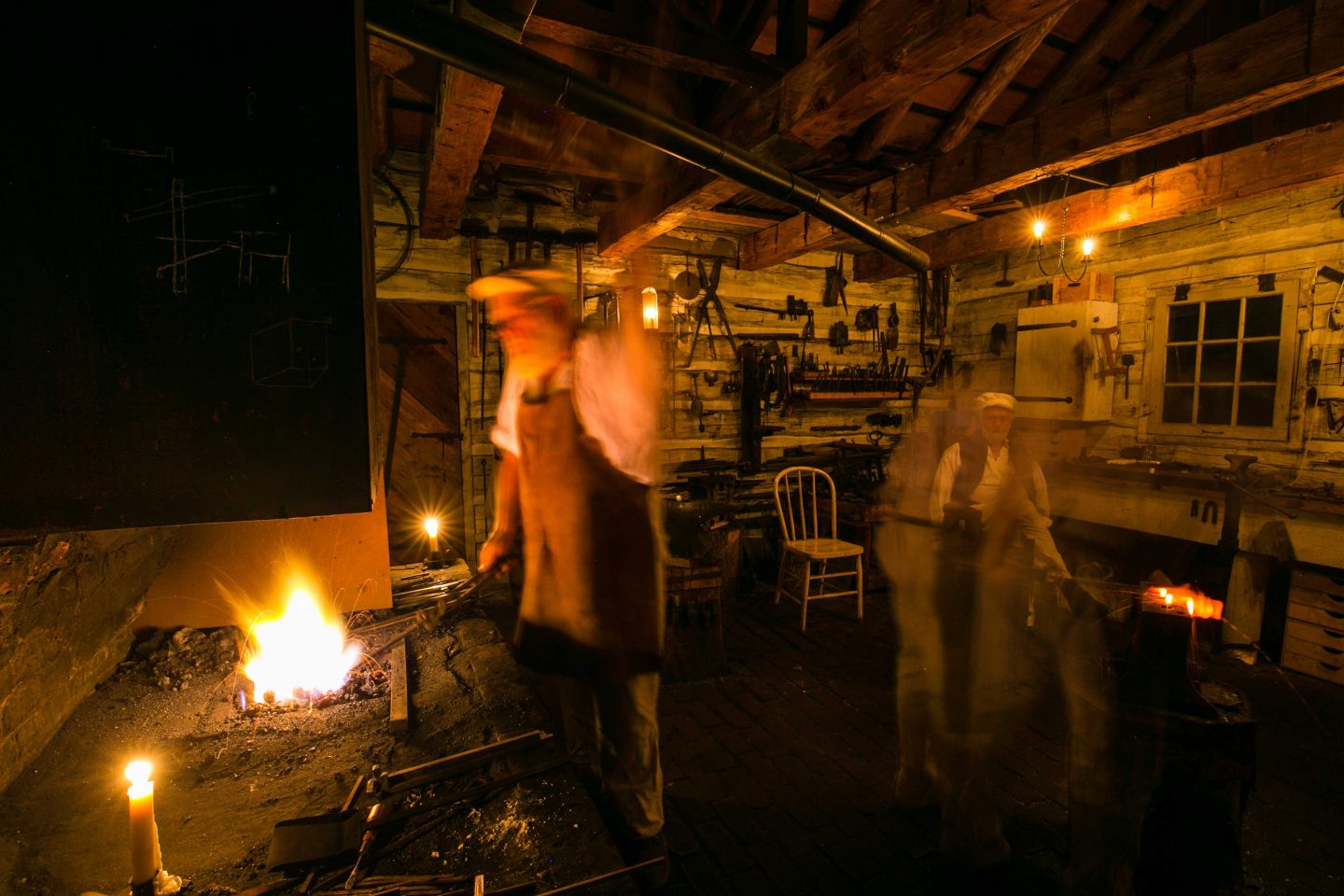
Slader has been an enthusiastic teacher to his young apprentices, receptive to new ideas and ways to approach projects, Keefer said. In return, Slader’s apprentices eagerly receive the older gentleman’s knowledge with reverence. All have committed to the ongoing work of research and practice that is the beating heart of living history.
“Dean has no problem standing right there with you and maybe bumping you or whatever. ‘Hey, lift your elbow like this.’ Or, ‘Hey, turn your hand … ’,” Keefer said. “Every single time that I’m with him, it’s always a learning experience.”
Perfection
Despite Bansen’s previous education, tending a coal forge at Fort Atkinson and setting the temperature on his propane forge at home was night and day different. Getting used to the early-1800s setup was his biggest challenge.
“[With] propane or a natural gas forge, you just set the heat level, and you forget it. But with coal or charcoal, you are constantly tending that because you’ve got to think, ‘Okay, I might have good heat right now, but I’ve got to add more coal to make sure that I still have that good heat five minutes from now.’”
For example, if a blacksmith was forge welding — joining two pieces of metal by heating them to a high temperature and hammering them together — the forge would need to be just under 2,200 degrees Fahrenheit. However, that borders the temperature where steel will start to burn.
“It’s a very fine line between the right temperature and, you’ve entirely ruined the material,” Bansen said. “If you look away, if you get to talking with somebody or, if you just got too many irons in the fire — this is where the phrase comes from — your project’s ruined.”
Keefer describes his education so far as a love-hate relationship.
“The reality of it is, in this case, I don’t know hardly anything. You expect to be able to watch someone produce a product or work or repair an item, and then in your head you think you can do it. Whether or not you can is soon to be proven by your ability to manipulate the material or use certain tools,” he said.
Unlike modern tools and parts, which are made by machinery and consistently duplicated, blacksmithing is a hand craft. Although this human element brings inconsistency to products, it allows each blacksmith’s style and technique to be differentiated. No two blacksmiths will produce the same exact piece of work. Keefer is learning to embrace this universal truth: that nothing is perfect.

The Fort Atkinson Hook
If you’ve visited a living history event, chances are you’ve heard of or seen the Fort Atkinson hook. Slader guessed that at the fort’s height, as many as 2,800 hooks — minimum — were driven into the fort’s walls, bearing all manner of soldiers’ kit. This unique style of hook is not found outside of Fort Atkinson, and it is because of Slader that it still exists.
Around 1991 or 1992, Slader found an original hook while walking along the area where the northeastern barracks are presently located. As it was the habit of living history volunteers at the time, he kept his eyes on the ground that day, in hopes of finding something interesting that the archaeologists had missed.
“There it was — the right angular portion with the curl on the end and tapered to a point on the other end,” Slader said. “That became the beginning of the Fort Atkinson hook, which was the proof that that’s what they were using. They needed those by the thousands, and they had to be done quickly.”
Slader then conducted his own archaeology. It took him seven or eight tries to figure out the process the fort’s blacksmiths used to produce the hooks. Bansen explained that by examining hammer and tool marks on a work, a person could piece together how a smith produced an item hundreds or thousands of years ago. Every blacksmith that has worked with Slader at the shop has been schooled in making the Fort Atkinson hook.
“I’ve burned several hooks during demonstrations,” Bansen said. “It looks so simple, but it’s not. And Dean’s pretty proud of those hooks, and he has every right to be. That is something that is both intensely frustrating, but also incredibly satisfying.”
Slader has produced hundreds of them. Visitors may purchase souvenir hooks at the Sutler Store.
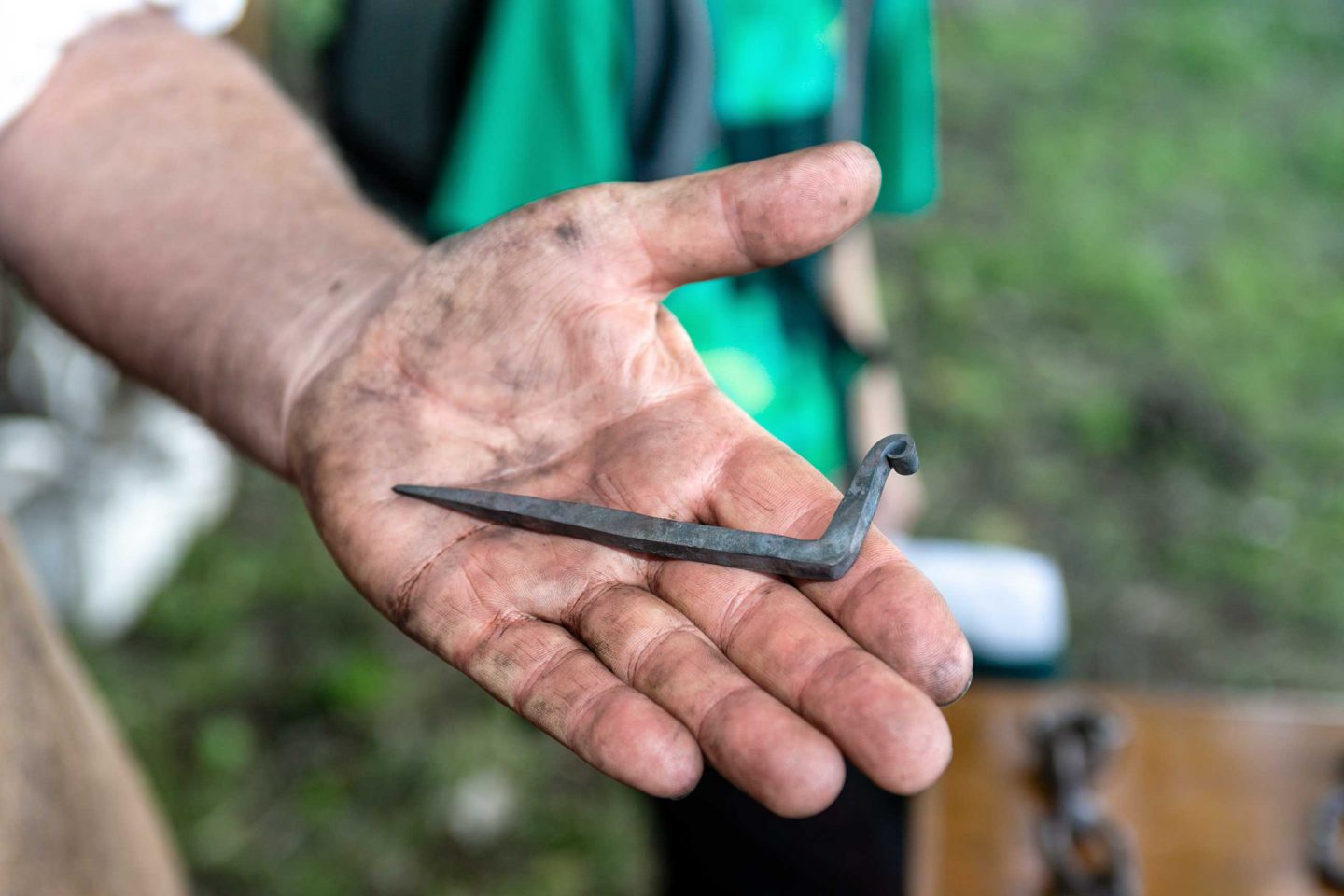
How They Do It
The Fort Atkinson Living History program is one of the best in the Midwest. While other historical sites may host one to two events each year, the park in Fort Calhoun offers six weekends of living history demonstrations annually, plus a Candlelight Tour in November.
“Every once in a while, somebody will show up from another site, and they’ll start asking questions. ‘How do you do this?’ ‘How do you sustain it all these years?’” Slader said. “You know, it’s a cooperative effort.”
Bansen and Keefer are quickly learning that living history is not just about the research and dressing the part — it’s also about the people. Fellow volunteers are becoming like family, and all enjoy the aspect of interacting with visitors.
“For the most part, when visitors come to the blacksmith shop, they want to see some kind of a project or product produced,” Keefer said. “I feel like there’s just as much energy given as there is taken. And that’s probably what makes it the most fun — and being around a good group of people.”
Fort Atkinson History
Active from 1820 to 1827, Fort Atkinson held nearly one-quarter of the standing U.S. Army, approximately 1,200 soldiers. It was established to protect the growing western fur trade and was the only U.S. garrison west of the Missouri River. After the Army reassigned soldiers elsewhere, the fort was abandoned and converted to farmland. In 1961, Fort Calhoun locals chartered the Fort Atkinson Foundation. The group dedicated itself to the acquisition of the Fort Atkinson site and its restoration. With help from the Nebraska Game and Parks and the Nebraska State Historical Society, the park was completed in 2000 after the construction of the Sutler Store.
Living History Schedule
May 3-4
May 31-June 1
July 5-6
Aug. 2-3
Sept. 6-7
Oct. 4-5
Nov. 1 – Candlelight Tour
A park entry permit is required of all vehicles entering Fort Atkinson SHP. Paid reservation required for the Candlelight Tour.
For more information, visit fortatkinsononline.org or call 402-468-5611.
